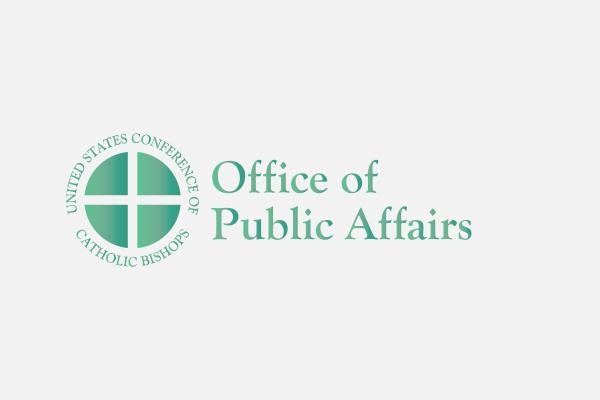The Church in Each Place and in All Places Was Theme for United Methodist Roman Catholic Dialogue
WASHINGTON (March 30, 2001) -- The first regular meeting of the sixth round of the United Methodist Roman Catholic Dialogue in the United States met from March 26 - 28 at St Paul's College, Washington, DC. The theme for this round was The Church in Each Place and in All Places.
WASHINGTON (March 30, 2001) -- The first regular meeting of the sixth round of the United Methodist Roman Catholic Dialogue in the United States met from March 26 - 28 at St Paul's College, Washington, DC. The theme for this round was The Church in Each Place and in All Places. Participants in the meeting explored the biblical images of the Church in the Scripture and in the biblical images used in United Methodist and Catholic teaching.
Participants found a wide range of agreement in the common biblical heritage, and a wide variety of biblical images used by both Catholics and Methodists. The image of the body of Christ emerged as the most used image in both churches, though it is interpreted differently by Catholics and Methodists. In the biblical material used in Catholic and Methodist churches, there was interest in the emphasis on the visible and institutional elements of the church in the Catholic documents. Barbara Reid, Catholic Theological Union, presented an overview of images of the church in the New Testament.
The developments in the theology of the church, ecclesiology, in United Methodism and Roman Catholicism, were reviewed. Dennis Doyle of the University of Dayton, provided an overview of the uses of communion ecclesiology, koinonia, since the second Vatican Council. It is in the context of a theology of communion that Catholic synods, episcopal conferences, and lay participation in parish and diocesan leadership have emerged.
Bruce Robbins, General Secretary for the General Commission on Ecumenical and Interreligious Concerns made a presentation on United Methodist ecclesiology, from a variety of sources. The basic statement of a Methodist understanding of the church is contained in the articles of faith and the constitution, enshrined in the Book of Discipline.
There are many Methodist churches around the world related in the World Methodist Council. The United Methodist Church is the largest of these. It was born in the United States from the leadership of John Wesley, himself an Anglican. Its own understanding of church is rooted in both its origins in the Church of England and in its adaptation to the American frontier and the democratic context of the emerging United States culture in the eighteenth and nineteenth centuries. Although it has bishops and councils, called conferences, these are understood somewhat differently than their Catholic counterparts.
Today the United Methodist Church includes several conferences outside of the United States. For this reason, questions of the global, national and local character of the church are of major importance. Just as the Catholic Church is experiencing the new phenomenon of episcopal conferences, diocesan and pastoral councils, and the collegiality of bishops, so United Methodists are experiencing a vision of church not limited to the borders and culture of the United States. The United Methodists have included in their team, Dr. Elizabeth Tapia, who comes to the dialogue from the Philippines, and Bishop Walter Klaiber, the United Methodist bishop of Germany.
In the informal discussions, Dr. Tapia recounted the role of the churches and the people in the peaceful transition in the Philippines, and her own journey as the first woman candidate for bishop in the United Methodist Conference in the Philippines. The Philippine United Methodist Conference is in the midst of a debate about whether to remain an integral part of the United Methodist Church, with the majority of its members in the United States, or to become an autonomous church, in communion with, but independent of the United Methodist Church. There was also discussion of the ecumenical situation in Germany, where the Catholic Church is a full member of the council of churches, and where the Methodists have moved into full communion with the Lutheran and Reformed (Calvinist) churches in Europe. There was also interest in the recently concluded agreement of full communion between the Episcopal and Lutheran churches in the United States, Called to Common Mission, and similar developments in northern Europe.
There was a wide ranging and productive discussion of the goal of the ecumenical movement in this dialogue, full communion between these two churches, and the task of this particular round of the dialogue in contributing to that goal. There was also intensive discussion of the method of dialogue, the variety of ways of doing theology together and the aspects of the theme to be taken up in the conversation. This round of the dialogue hopes to produce a theological text that may also taken account of, and contribute to the grassroots experience of Methodist and Catholics on the road to visible unity.
The dialogue decided for their next meeting, in Washington in November to continue discussing the themes of koinonia and connexionalism and to take up the World Methodist Council - Pontifical Council for Promoting Christian Unity dialogue report, Doing theTruth in Chairity, which will be issued in July,
The Dialogue is cochaired by Bishop William Skylstad of Spokane, for the National Conference of Catholic Bishops, and Bishop Klaiber from Frankfurt.

